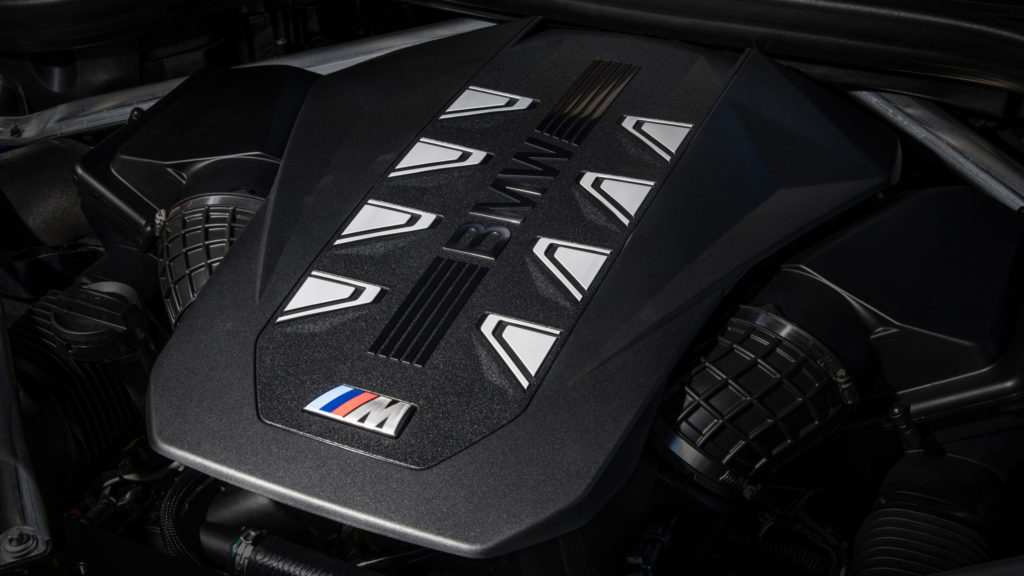Hidden within this week’s X7 facelift press release was a subtle hint that the updated model will come with BMW’s new V8 engine. The hint came in the form of a line describing the engine choices available in the X7 LCI: “The new BMW X7 offers a choice of two state-of-the-art and extremely powerful engines from the modular generation of the BMW Group Efficient Dynamics engine family.”
The key word in that sentence is modular. Although the line of modular BMW engines dates back to 2013 with the introduction of the three-cylinder B38 and has since grown to include the B48 four-cylinder and the B58 six-cylinder, the N63 and M derivative S63 V8s, introduced in 2008 and 2010 respectively, predate BMW’s use of modular design architecture.
Three years ago when news of BMW developing a new V8 broke, details included the new design using a modular architecture. Other items of note included the engine being an M design, and the S68 in the X7 is consistent with both of these expectations. All of this comes fourteen years after the introduction of the N63 V8, but even with the updated X7 due to arrive at some point during the third quarter, specific details of the engine remain scarce.
Here’s what we do know: The S68 displaces 4.4 liters and is described by BMW as a genuine M TwinPower Turbo V8. In the X7 M60i, the engine develops 523 horsepower and 553 pound-feet of torque (the same as the N63B44T3 of M50i trim it replaces), and is backed by a ZF eight-speed automatic transmission with an integrated 48-volt mild-hybrid system. Technical details include the thermodynamic benefits of a cross-bank exhaust manifold, bank-symmetrical turbochargers, and external engine oil cooling, in addition to a reinforced crankshaft drive, further developed turbocharging with a blow-off valve, a new oil pump, and a weight-minimized oil sump, according to BMW. Unfortunately, that’s where the specifics end, and particulars like the bore and stroke, size and design of the turbochargers, the cylinder head design, and more remain unknown.
The S68 M V8 being introduced in an SAV like the X7 isn’t particularly unexpected, as BMW introduced the previous S63 twin-turbocharged M V8 in the first-generation X5 and X6 M, and the current S58 twin-turbocharged M inline six-cylinder engine in the X3 and X4 M. The X7 M60i is an M Performance model and not a full M model, however, but still wears quad exhaust tailpipe finishers and has an M on the kidney grille.
There’s also the question of output. The 523 horsepower of the S68 version used in the X7 M60i is respectable, but more powerful versions are almost certainly on the way, considering the upcoming XM performance hybrid boasts total combined output equivalent to 750 horsepower and 737 pound-feet of torque from its V8 hybrid drivetrain.
The reasons behind developing and introducing a new engine are clear. The N63 and M derivative S63 have been around longer than any modern BMW engine, and have been subject to more revisions and technical updates over the years than any other BMW automobile engine in the company’s history. The N63 and S63 have proven their versatility, capability, and performance potential, and are believed to have overcome their initial faults as the were improved, but are likely nearing the end of their life in terms of efficiency and emissions regulation compliance.—Alex Tock
[Photo courtesy BMW AG.]
